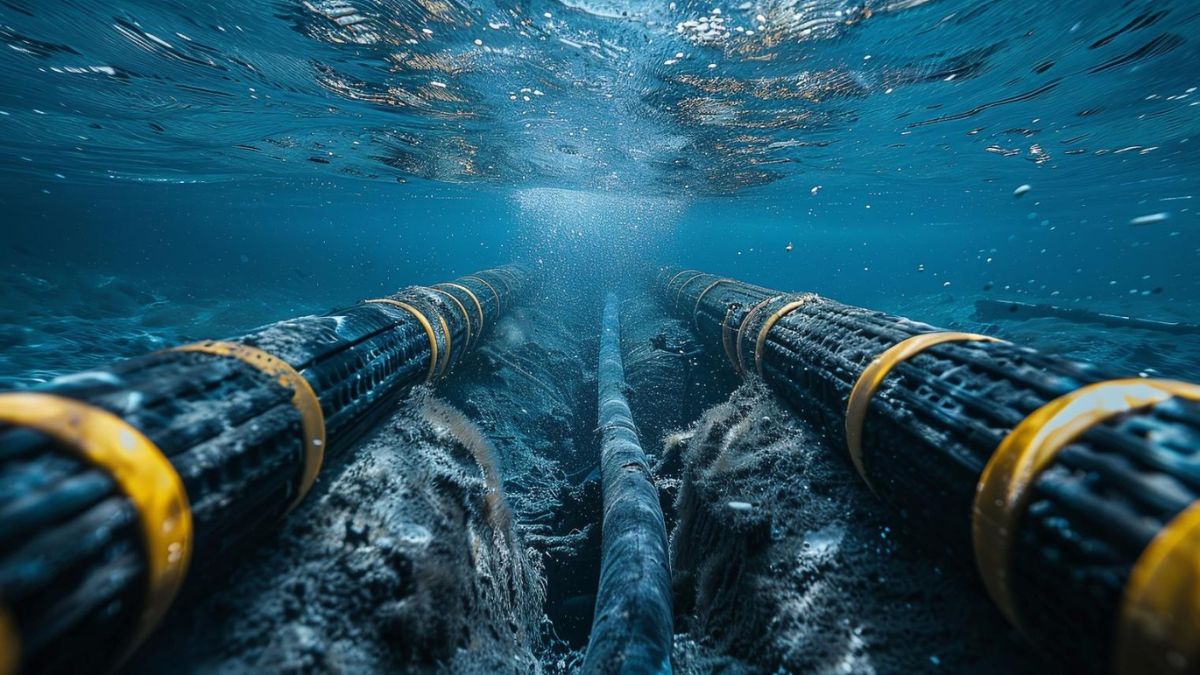China has unveiled a deep-sea cable-cutting device capable of slicing through the world’s most fortified underwater communication and power cables at unprecedented depths.
The development has raised concerns over the security of global undersea infrastructure, as such cables carry 95 per cent of global data transmission and support critical military and civilian operations.
Developed by the China Ship Scientific Research Centre (CSSRC) and the State Key Laboratory of Deep-Sea Manned Vehicles, the device is designed to be integrated with China’s advanced crewed and uncrewed submersibles, such as the Fendouzhe (Striver) and the Haidou series.
This is the first time any nation has officially disclosed possession of such a technology, marking a significant development in deep-sea operations with both civilian and military implications.
Why the deep-sea cable cutting technology is unique
The new device is capable of cutting cables at depths of up to 4,000 metres (13,123 feet), which is twice the maximum operational range of existing undersea communication infrastructure.
Traditional cable-cutting methods have long struggled with the challenge of slicing through steel-reinforced cables.
To address this, the Chinese team, led by engineer Hu Haolong, developed a 150 mm (six-inch) diamond-coated grinding wheel that spins at 1,600 rpm — generating enough force to shatter steel while minimising disturbance to surrounding marine sediment.
These details were published in a peer-reviewed paper published in Chinese-language journal Mechanical Engineer on February 24, according to the South China Morning Post (SCMP).
The tool is powered by a one-kilowatt motor with an 8:1 gear reducer, balancing torque and efficiency. However, prolonged use at such depths may lead to overheating, presenting a potential limitation.
The cutting device is enclosed in a titanium alloy shell with oil-compensated seals to prevent implosion under the intense water pressure found at 4,000 metres.
The design allows for sustained operation in extreme conditions where water pressure exceeds 400 atmospheres. Operated by robotic arms in near-zero visibility, the device uses advanced positioning technology to ensure precision alignment during cutting operations.
What China’s cable-cutting tool means for defence
While officially developed for civilian applications such as salvage operations and seabed mining, the tool’s dual-use nature has sparked concerns in global security circles. The ability to disrupt strategic subsea cables could provide Beijing with a powerful tool in geopolitical conflicts.
One of the most concerning scenarios involves the potential targeting of undersea cables near Guam, a key hub in the US Indo-Pacific strategy . Guam hosts over a dozen fiber-optic cables serving both military and civilian clients, including Google.
The ability to sever these lines from stealthy unmanned platforms without surfacing could significantly impact global communications and military readiness during a crisis.
Retired US Air Force Colonel Raymond Powell, the founder of the maritime transparency project SeaLight at Stanford University, has warned that China is expanding its “already vast grey zone toolkit.”
Powell told The Diplomat, “China continues to expand its already vast grey zone toolkit, having long ago calculated that its willingness to blur the lines between peace and hostilities provides it with an asymmetric advantage.”
He further noted, “Cable and pipeline sabotage is more than mere harassment. It is a reminder that Beijing has the ability to cause far more damage to its enemies, should it choose to do so.”
Beijing’s growing capabilities in deep-sea operations are also drawing comparisons with Russia’s alleged involvement in undersea sabotage activities.
There have been 11 reported incidents of underwater cable damage in the Baltic Sea since 2023, fuelling speculation that both China and Russia may be engaging in coordinated grey-zone warfare tactics.
Taiwan, in particular, has seen a spike in suspected Chinese cable sabotage . In February 2025, Taiwanese authorities seized a Togo-flagged cargo ship, the Hong Tai 58, crewed by Chinese workers, after it was linked to the severing of an undersea telecom cable, reported The Telegraph.
Taiwan’s government has reported five such cases this year, compared to three in both 2023 and 2024, reflecting an increasing trend in suspected attacks on subsea infrastructure.
Why this development is important
China now operates the world’s largest fleet of crewed and uncrewed submersibles, positioning itself as a dominant force in undersea operations. Last month, construction began on a 2,000-metre-deep underwater “space station” in the South China Sea.
Designed to accommodate at least six people for extended month-long missions, the facility is expected to bolster China’s presence in contested waters.
Meanwhile, the US deep-sea fleet has been struggling to keep pace, with aging vessels limiting America’s ability to counter China’s expanding maritime capabilities.
Japan’s only crewed submersible, the Shinkai 6500, is also nearing retirement without a planned successor, reported SCMP.
Hu’s research team insists that the cable-cutting device is intended for marine resource development rather than military applications. In the journal they wrote, “Nations are now compelled to redirect their resource exploitation focus towards the seas. The 21st century is the century of the oceans. Enhancing marine resource development capabilities, advancing the blue economy and building China into a maritime powerhouse constitute critical components of realising the Chinese dream.”
Also Watch:
With inputs from agencies


)

)
)
)
)
)
)
)
)



